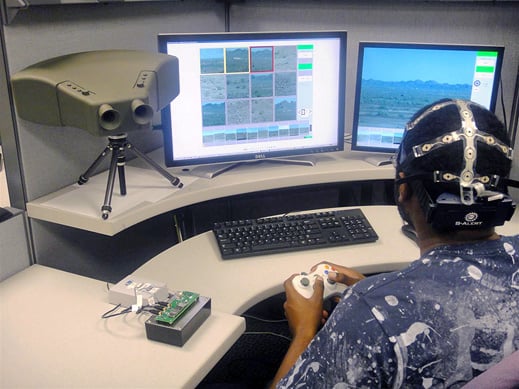The dogs dying for your fake UGG boots
by Charlotte Kemp, dailymail.co.uk
November 10th 2011 As copycat 'Ugg' boots flood the market, Femail tests 10 pairs to see where the fur really comes from - with shocking results
Four weeks ago I ordered a pair of black UGG boots on the internet. According to the postal tracking service, they were due to arrive at my home in Kent on Monday.
But when the postman came knocking, he wasn’t armed with sheepskin-lined Sundance II boots in black, just an ominous-looking letter.
‘Notice of Goods Detained,’ read the missive, bearing the UK Border Agency logo. ‘We have detained your parcel containing “UGG” boots because we believe they are counterfeit, pirated or patent-infringing goods. We have contacted the owner of the Trade Mark, Copyright or Right Holder and asked them to determine whether this is the case.’

A second letter is enclosed in the same envelope. It’s from Deckers, the owners of the UGG brand. They’ve examined the boots, confirmed that they are fakes and now plan to destroy them.
‘As the goods are counterfeit and were not purchased from a genuine UGG site we are not in a position to offer a refund,’ it concludes .
So no boots and I’m £95 out of pocket. But worse is to come with the delivery of a second pair of UGG-style boots ordered over the internet.
They are topped with a fashionable trim of what I assume is fleecy sheepskin. It turns out to be fur from the coat of the raccoon dog.
Farmed in horrific conditions in China, the raccoon dog is a species related to the domestic dog. Animal rights activists recently released video showing sickening scenes of them being skinned alive on a Chinese fur farm.
But unlike dog or cat fur, which cannot be sold in Britain, there is no ban.
As a result, there are fears that, this winter, thousands of unsuspecting Britons may be fooled into buying imitation UGG boots made using pelts of animals skinned alive.
Clearly, the counterfeiters are prepared to go to just about any lengths to maximize profits. Across China, underpaid workers are risking their health in tanneries and sweatshops, producing boots for sale to fashion lovers in the West as the real thing.

While the genuine boots made by UGG Australia use only sheepskin produced in a humane way, there is no such guarantee with the lookalikes.
To lift the lid on the ugly underbelly of the UGG phenomena, we purchased ten pairs of boots marketed at British buyers on the high street and internet.
Some were sold as genuine UGG Australia boots, others closely copied their design. In total they cost £1,133.16. The cheapest pair cost £14.99, the most expensive £280.
The ten pairs were then examined by expert Dr Phil Greaves of Microtex, a textile fibre analysis laboratory in West Yorkshire, to see whether those sold as UGGs were real or fake. Then more testing was done to find what the boots were actually made of — with shocking results.
As Dr Greaves explained, the genuine boots are made of sheepskin with natural wool attached.
‘Basically, you reverse the animal and have the wool as the lining and the suede outside,’ he says.
But three of the ten pairs he analysed for us weren’t sheepskin at all and a further three pairs — sold as 100 per cent Australian Sheepskin — were trimmed with animal fur. So what did we discover?
INTERNET FAKES
Despite a crackdown on fraudulent websites selling cut-price UGGs, the internet remains a huge marketplace for counterfeit boots, with rogue traders going to great lengths to make sites look as legitimate as possible.
Many are registering domain names with .co.uk at the end and use photography copied from the official UGG Australia site.
My first port of call is a website that claims to be an accredited distributor of the boots. The UGG Australia logo is on display along with pictures of the classic styles I recognise from the official site.
I order the Knightsbridge style in size 38 and £84 is debited from my account. The boots arrive a month later, posted direct from China. There is an overpowering smell of chemicals when I open the box, but they appear to have genuine soles and the sheepskin feels soft.
But analysis by Dr Greaves reveals the boots are a sandwich of three layers. There is real wool on the inside but there is also a hidden foam layer and cheap cattle suede on the exterior. Fakes!
Attempts to order genuine UGGs from two more websites mysteriously fail at the checkout and then I receive several emails asking for direct payment via PayPal or Western Union, which I decline. I buy two more pairs of UGG Australia branded boots online. The first are from clearanceuggsoutlet.co.uk, which seems to be registered to a Cambridgeshire address, but the payment goes to a firm in China.
I purchase the second pair, advertised as the real thing on uggbootsukonline.co.uk using PayPal. A month after these orders the UK Border Agency letter arrives — but no boots.
The Metropolitan Police’s e-crime unit believes gangs in Asia are making millions of pounds on web sales of fake UGGs.
THE HIGH STREET

Since registering UGG Australia as a trademark in 2005, Deckers has the UK monopoly on the boots. As prices start at £175 for the classic short style, many consumers are still on the lookout for a cheaper alternative.
And, according to Handley Brustad, joint lead officer in intellectual property for the Trading Standards Institute, there are still pockets of the High Street selling cheap imitations.
After snapping up what turns out to be my only bargain — a pair of genuine UGG boots in the House of Fraser sale for £115 — I buy two pairs from High Street stores Internacionale and River Island. These do not bear the UGG label and are not sold as such, but have clearly been designed to look similar to the real thing.
When I ask staff in Internacionale in Maidstone what the £14.99 boots are made of, they can’t enlighten me. But Dr Greaves can. ‘These are made of synthetic materials. They are poor imitations and wouldn’t last a single outing in the rain,’ he says.
The River Island pair, costing £30, are clearly marked as having a faux fur lining and tests show they have a cattle suede exterior.
EBAY SWINDLES
I make my next purchase on eBay. According to Deckers’ website, UGG Australia does not authorise any of its official dealers to sell on eBay.
Indeed, it advises customers to steer clear of auction sites altogether.
But this is clearly having little impact — there are plenty of boots claiming to be genuine UGGs. I find myself in a frenzied bidding war for a classic chocolate pair.
‘There are lots of fakes but these are 100 per cent real — paid £200 for them,’ reassures the seller, claiming the boots have been worn, but are in excellent condition.
I ‘win’ the boots for £78, plus £6.50 post and package. They arrive the following day in what appears to be an UGG box. But Dr Greaves confirms my suspicions these too are counterfeit.
‘Although the boots are made from sheepskin, they are of very poor quality,’ he says. ‘The boot is floppy and limp, the stitching is bad and the soles are inferior to the genuine UGG Australia boot.
‘It is likely if a boot like this were analysed further we would find unsafe levels of chromium-6 and formaldehyde — chemicals used in the production process that the wearer will be exposed to.’
He has similar concerns about another black pair of lookalike boots that I buy on the internet for £70.
FUR TRIMS
Each season, UGG Australia comes up with a new covetable, and widely copied, design. This winter, it’s all about the trim — the fluffier the better.
But while the authentic boots are finished with Mongolian sheepskin or shearling cuffs, the fakes boots flooding the market come with more sinister embellishments.
One pair I purchase on Amazon turns out to be topped with mink, while another two pairs (one, ‘Foxy UGG boots’ from an eBay seller in Australia, the other from a popular UK e-boutique) are finished with what turns out to be raccoon dog fur. This is despite the labelling claiming they are 100 per cent Australian sheepskin.
‘The fibre characteristics of the fur are those that you would expect to find in the raccoon dog,’ confirms Dr Greaves. ‘There is no mention of the fur in any of the labelling, even though it should be declared under EU laws.
'This is a shocking finding given the recent revelations of how these animals are farmed and killed.’
He is referring to the graphic video released last month by Humane Society International showing workers at a fur farm skinning the animals alive.
‘We are concerned that the most cruelly produced fur is being sold as if it were wool,’ says Wendy Higgins, EU communications director for HSI UK. ‘This level of barbarity will horrify UK consumers.’
Deckers Outdoor Corporation confirmed last month that UGG Australia does not use raccoon dog fur in any of its products. There are guidelines on its website on how to spot a fake. But customers continue to be conned.
This Christmas one can only guess how many British women will be disappointed to receive not a pair of UGGs, but a letter informing them their gift has been seized by customs. Or worse.
Original Page: http://pocket.co/spQYM
Shared from Pocket












 The state of Illinois has some of the harshest “eavesdropping” laws on the books, and those statutes have been frequently abused to prosecute individuals for filming police actions in public in numerous cases.
The state of Illinois has some of the harshest “eavesdropping” laws on the books, and those statutes have been frequently abused to prosecute individuals for filming police actions in public in numerous cases.







